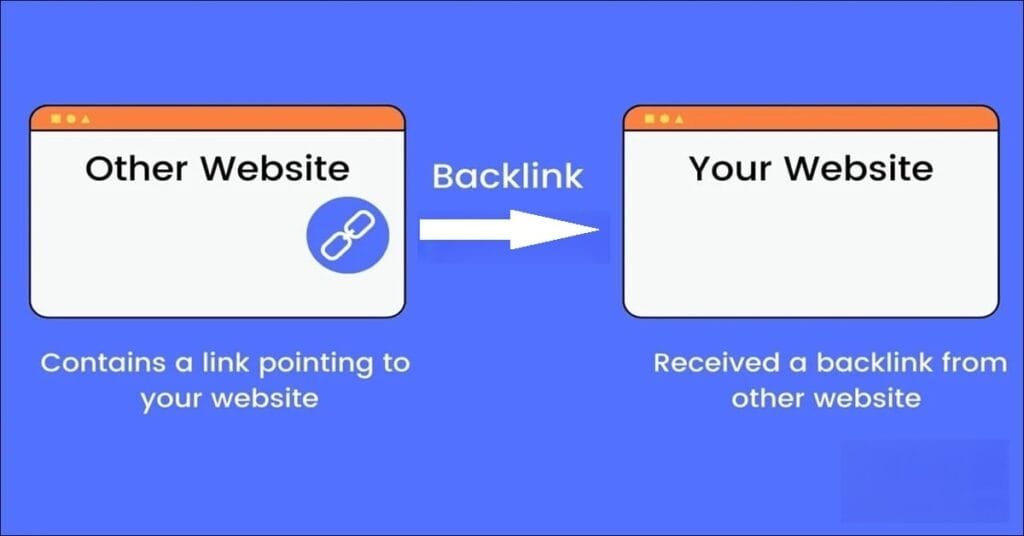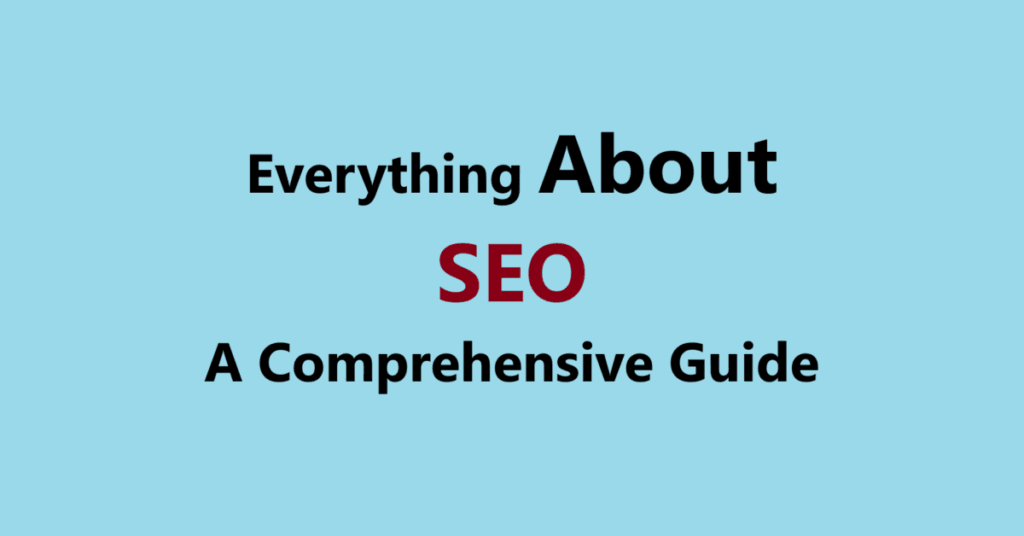Search Engine Optimization (SEO) is the backbone of any successful blog. It ensures your content reaches the right audience, drives organic traffic, and helps you rank higher on search engine results pages (SERPs). If you’re running your own blog and want to master SEO without relying on expensive courses or consultants, this guide is for you. Below, we’ll walk you through a step-by-step approach to learning SEO on your own.
1. Understand the Basics of SEO
Before diving into advanced techniques, it’s crucial to grasp the fundamentals of SEO. Here’s what you need to know:
What is SEO?
SEO is the practice of optimizing your website or blog to improve its visibility on search engines like Google, Bing, and Yahoo. The better your SEO, the higher your chances of ranking for relevant keywords.
Key Components of SEO:
- On-Page SEO: Optimizing individual pages (e.g., content, meta tags, headings).
- Off-Page SEO: Building authority through backlinks and social signals.
- Technical SEO: Ensuring your site is crawlable and indexable by search engines.
Why SEO Matters for Your Blog:
- Drives free, organic traffic.
- Builds credibility and authority.
- Enhances user experience.
2. Set Up Your Blog for SEO Success
Choose the Right Platform:
Platforms like WordPress, Blogger, and Wix offer built-in SEO tools. WordPress, in particular, is highly recommended due to its flexibility and plugins like Yoast SEO.
Install Essential SEO Plugins:
- Yoast SEO: Helps optimize content and meta tags.
- Google Site Kit: Tracks performance directly from your dashboard.
- SEMrush or Ahrefs: For advanced keyword research (optional but helpful).
Optimize Your Blog’s Structure:
- Use a clean, mobile-friendly theme.
- Ensure fast loading speeds (use tools like Google PageSpeed Insights).
- Create a logical URL structure (e.g.,
yourblog.com/seo-guide).
3. Master Keyword Research
Keywords are the foundation of SEO. Here’s how to find the right ones:
Tools for Keyword Research:
- Google Keyword Planner: Free tool for finding search volume and competition.
- Ubersuggest: Provides keyword ideas and difficulty scores.
- AnswerThePublic: Identifies questions people ask about your topic.
How to Choose Keywords:
- Long-Tail Keywords: These are less competitive and more specific (e.g., “how to learn SEO for beginners”).
- Search Intent: Ensure the keyword matches what users are looking for (informational, commercial, or navigational).
Keyword Placement:
- Include keywords in:
- Title tags.
- Headings (H1, H2, H3).
- First 100 words of your content.
- Image alt texts.
4. Create High-Quality, SEO-Optimized Content
Follow the E-A-T Principle:
- Expertise: Demonstrate your knowledge.
- Authoritativeness: Cite credible sources.
- Trustworthiness: Ensure accuracy and transparency.
Content Optimization Tips:
- Write comprehensive, long-form content (1,500+ words).
- Use headings and subheadings for readability.
- Include internal and external links.
- Add multimedia (images, videos, infographics).
Avoid Keyword Stuffing:
- Use keywords naturally; don’t overdo it.
5. Build Backlinks to Your Blog
Backlinks are votes of confidence from other websites. Here’s how to earn them:
Guest Blogging:
Write for reputable blogs in your niche and include a link back to your site.
Broken Link Building:
Find broken links on other sites and suggest your content as a replacement.
Create Shareable Content:
- Infographics.
- How-to guides.
- Case studies.
Engage in Communities:
Participate in forums like Reddit or Quora and link to your blog when relevant.
6. Monitor and Improve Your SEO Performance
Use Analytics Tools:
- Google Analytics: Tracks traffic, bounce rates, and user behavior.
- Google Search Console: Identifies indexing issues and search queries.
Track Your Rankings:
Use tools like SEMrush or Ahrefs to monitor keyword rankings.
Update Old Content:
Refresh outdated posts with new information and keywords.
7. Stay Updated with SEO Trends
SEO is constantly evolving. Follow these resources to stay ahead:
- Blogs: Moz, Search Engine Journal, Backlinko.
- YouTube Channels: Ahrefs, Neil Patel.
- Podcasts: The Search Engine Journal Show.
40 Questions and Answers Based on SEO
1. What is SEO?
SEO stands for Search Engine Optimization. It’s the practice of optimizing your website or blog to rank higher on search engine results pages (SERPs) for relevant keywords, thereby attracting more organic traffic.
2. Why is SEO important for my blog?
SEO helps your blog gain visibility, attract targeted traffic, and build authority in your niche. Without SEO, your content may remain undiscovered, even if it’s high-quality.
3. Can I learn SEO on my own?
Yes! SEO is a skill you can learn independently through online resources, courses, and hands-on practice. Many successful SEO professionals are self-taught.
4. What are the main components of SEO?
SEO consists of three main components:
- On-Page SEO: Optimizing individual pages (e.g., content, meta tags, headings).
- Off-Page SEO: Building backlinks and authority (e.g., guest posting, social media).
- Technical SEO: Ensuring your site is crawlable and indexable (e.g., site speed, mobile-friendliness).
5. How long does it take to see SEO results?
SEO is a long-term strategy. It can take 3-6 months to see noticeable results, depending on competition, niche, and effort.
6. What are keywords, and why are they important?
Keywords are the terms users type into search engines. Targeting the right keywords helps your blog rank for relevant searches.
7. How do I find the right keywords for my blog?
Use tools like Google Keyword Planner, Ubersuggest, or Ahrefs to research keywords with high search volume and low competition.
8. What is keyword intent?
Keyword intent refers to the purpose behind a search query (e.g., informational, navigational, commercial, or transactional). Align your content with the user’s intent.
9. How do I optimize my blog posts for SEO?
- Use keywords naturally in the title, headings, and content.
- Write high-quality, engaging content.
- Optimize meta descriptions and URLs.
- Include internal and external links.
10. What is a meta description?
A meta description is a short summary (150-160 characters) of your page’s content. It appears in SERPs and should entice users to click.
11. How often should I publish new content for SEO?
Consistency matters more than frequency. Aim for 1-2 high-quality posts per week rather than daily low-quality content.
12. Does blog post length affect SEO?
Longer posts (1,500+ words) tend to rank better because they cover topics comprehensively. However, quality is more important than word count.
13. What are backlinks, and why do they matter?
Backlinks are links from other websites to yours. They signal authority to search engines, improving your rankings.
14. How can I get backlinks for my blog?
- Guest post on reputable blogs.
- Create shareable content (e.g., infographics, guides).
- Engage in broken link building.
15. What is anchor text?
Anchor text is the clickable text in a hyperlink. Use descriptive, keyword-rich anchor text for better SEO.
16. What is internal linking, and how does it help SEO?
Internal links connect pages within your blog. They improve navigation, distribute link equity, and keep users engaged.
17. How do I check my blog’s SEO performance?
Use tools like Google Analytics, Google Search Console, and Ahrefs to track rankings, traffic, and backlinks.
18. What is Google Search Console?
Google Search Console is a free tool that helps you monitor and troubleshoot your blog’s presence in Google search results.
19. What is mobile-friendliness, and why is it important?
Mobile-friendliness ensures your blog works well on smartphones. Google prioritizes mobile-friendly sites in rankings.
20. How can I make my blog mobile-friendly?
- Use a responsive theme.
- Test your site with Google’s Mobile-Friendly Test.
- Optimize images and reduce load times.
21. What is page speed, and how does it affect SEO?
Page speed is how quickly your blog loads. Slow pages lead to higher bounce rates and lower rankings.
22. How can I improve my blog’s loading speed?
- Compress images.
- Use a caching plugin.
- Minimize HTTP requests.
23. What is a sitemap, and do I need one?
A sitemap is a file that lists all your blog’s pages. It helps search engines crawl and index your content efficiently.
24. How do I submit my sitemap to Google?
Submit it via Google Search Console under the “Sitemaps” section.
25. What is schema markup?
Schema markup is code that helps search engines understand your content better, often leading to rich snippets in SERPs.
26. How do I optimize images for SEO?
- Use descriptive file names (e.g.,
learn-seo-guide.jpg). - Add alt text.
- Compress images without losing quality.
27. What is alt text?
Alt text describes an image for search engines and visually impaired users. It should be concise and relevant.
28. What are heading tags (H1, H2, H3)?
Heading tags structure your content. Use them hierarchically (e.g., H1 for the title, H2 for subtopics, H3 for sub-sections).
29. Can I use the same H1 tag multiple times on a page?
No. Each page should have one unique H1 tag (usually the title).
30. What is duplicate content, and how does it hurt SEO?
Duplicate content is identical or very similar content across multiple pages. It confuses search engines and dilutes rankings.
31. How can I avoid duplicate content?
- Use canonical tags.
- Rewrite or consolidate similar content.
- Avoid copying others’ work.
32. What is a 404 error, and how do I fix it?
A 404 error occurs when a page doesn’t exist. Fix it by redirecting broken links to relevant pages.
33. What is a 301 redirect?
A 301 redirect permanently moves a page’s URL to another, passing SEO value to the new page.
34. How do I optimize my blog for voice search?
- Use conversational keywords.
- Answer questions concisely.
- Optimize for featured snippets.
35. What are featured snippets?
Featured snippets are highlighted answers at the top of SERPs. Aim to structure your content to answer questions clearly.
36. How do I track my blog’s rankings?
Use tools like SEMrush, Ahrefs, or Google Search Console to monitor keyword rankings.
37. What is local SEO, and does it apply to my blog?
Local SEO helps businesses rank in local searches. If your blog targets a local audience, optimize for location-based keywords.
38. How do I optimize my blog for social media?
- Share posts on social platforms.
- Use engaging visuals.
- Encourage social sharing with buttons.
39. What is the role of user experience (UX) in SEO?
Good UX (e.g., easy navigation, fast load times) reduces bounce rates and improves rankings.
40. How do I stay updated with SEO trends?
Follow SEO blogs (e.g., Moz, Search Engine Journal), attend webinars, and join online communities.
Final Thoughts
Learning SEO for your blog is a marathon, not a sprint. By following this guide, you’ll gradually build the skills needed to rank higher, attract more readers, and grow your blog organically. Remember, consistency and patience are key. Start implementing these steps today, and watch your blog thrive!


